
Hope for a huge, ancient and imperilled fish
First Nations are leading efforts to make sure lake sturgeon can find a home in...
Thousands of some of Canada’s most endangered trees are falling in logging operations in British Columbia on privately owned land due to lax regulations, The Narwhal has learned.
According to a provincial government database, CanWel Timber Ltd. has logged more than 5,000 cubic metres of whitebark pine trees since 2016. The company’s operations include logging on 55,000 hectares of privately owned forest in the ecologically rich Elk Valley in southeastern British Columbia. CanWel took over Jemi Fibre Corp. in 2016.
The logging has occurred despite the federal government formally listing whitebark pine trees as endangered under Canada’s Species at Risk Act in 2012. According to the same database, only one company has logged more of the critically endangered trees since they were listed. That company, as detailed in a previous investigation by The Narwhal, is Canfor — B.C.’s largest forest company. The vast majority of Canfor’s logging occurs on public lands.
CanWel’s ongoing logging has many people in the region concerned, says Eddie Petryshen, conservation coordinator for Wildsight, an organization working to protect lands in the Columbia and Rocky Mountain regions.
“Two hundred-hectare, steep-slope clear-cuts are popping up all over the place,” Petryshen says. “The whole landscape is increasingly becoming one giant cut-block.”
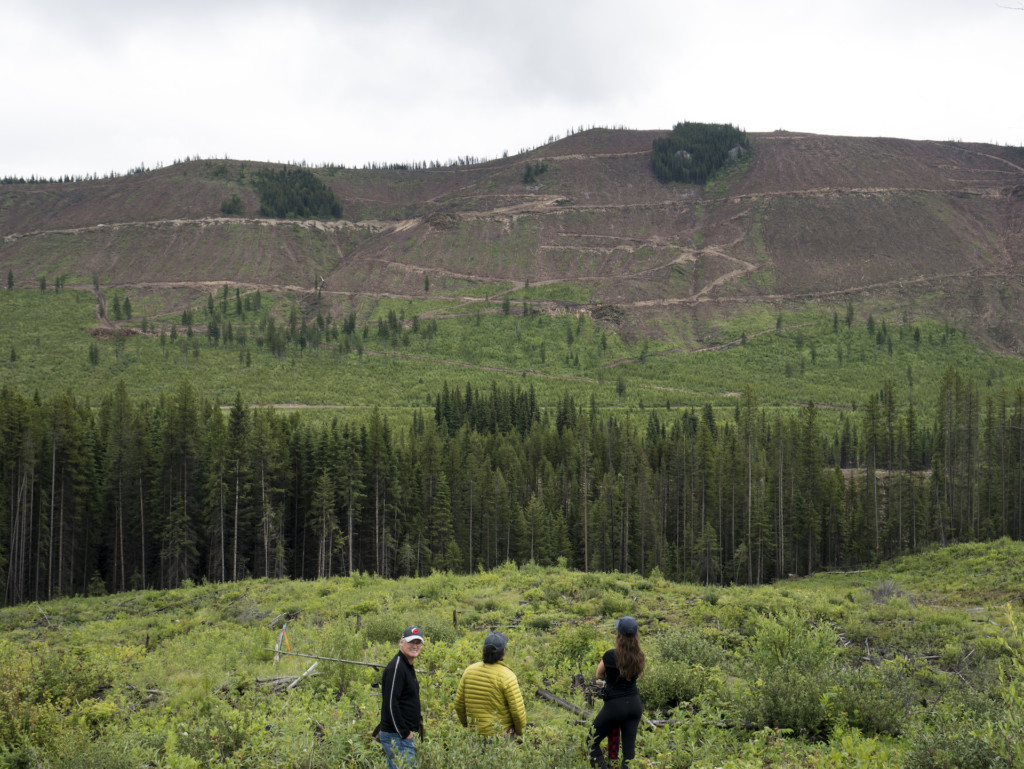
Recent steep slope logging above the Fording River near Elkford’s Josephine Falls. Photo: Bailey Repp
The Elk and Flathead valleys are considered a critical north-south wildlife corridor for grizzly bears and other wide-ranging species linking areas to the south in Montana to the Banff and Jasper national park complex to the north.
Because those parks are under direct federal government control, one company that logged just 38 endangered whitebark pine trees within the borders of Banff National Park was fined $2.1 million in 2018. But on Crown lands and private lands under provincial government control in B.C., no fines have yet been levied for a single whitebark pine tree being logged in the province, despite more than 19,000 cubic metres of the trees being logged since being listed as a species at risk.
Petryshen says CanWel’s logging is a growing concern not just because of its pace, but how markedly different it is from what used to occur when Tembec — which owned the land until 2014 — managed logging in the area. Partly in response to the urging of conservationists, Tembec embarked on a quest to have its logging operations across Canada independently certified as sustainable by an independent third party auditor under the auspices of the Forest Stewardship Council. The council is widely considered to be among the most stringent forest certification programs.
Tembec had logging operations in the East Kootenay certified under the Forestry Stewardship Council, including both operations on publicly owned or Crown lands and on private lands. As a result, the company did more partial-cutting or selective logging, its clear-cuts were smaller in size and it worked hard to protect “visual quality” in its Elk Valley logging operations.
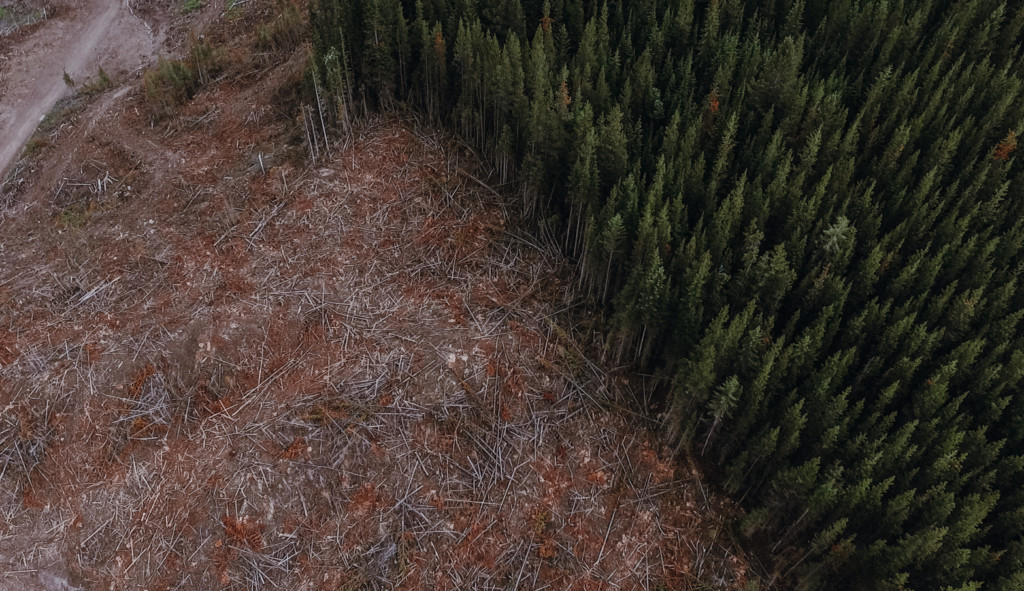
Recent clearcut harvesting on CanWel’s Private Managed Forest Land contrasts with remaining intact forest in the Leach Creek drainage east of Fernie. Photo: Bailey Repp
“It was to a much higher standard than what we’re seeing [with CanWel] and to a much higher standard than what’s regulated under the Private Managed Forest Land Act,” Petryshen says. “And that’s one of the really big shifts. We went from, you know, that [private] land being treated essentially as Crown land to it being treated as: ‘Hey. We’ve got this property and we’re going to manage it for the short term.’ ”
Tembec eventually ran into financial troubles and sold its private lands in the Elk Valley to Jemi in 2014. And with the sale the logging innovations ended.
CanWel’s logging of endangered whitebark pine trees plays out against the backdrop of an ongoing provincial government review of private managed forest land regulations and a recently released report by the University of Victoria’s Environmental Law Centre which found much to be concerned about on private forest lands throughout the province.
The report concluded that in the 15 years since the Private Managed Forest Land Act came into effect in 2004, “private forest land has been logged at unsustainable rates, without adequate protection of sensitive public resources.”
Among other things, the report recommends that the provincial government grant local governments the authority to introduce and enforce bylaws to protect streamside forests and community watersheds from private land logging; and for the provincial government to set “clear environmental standards that ensure private managed forests are logged sustainably.”
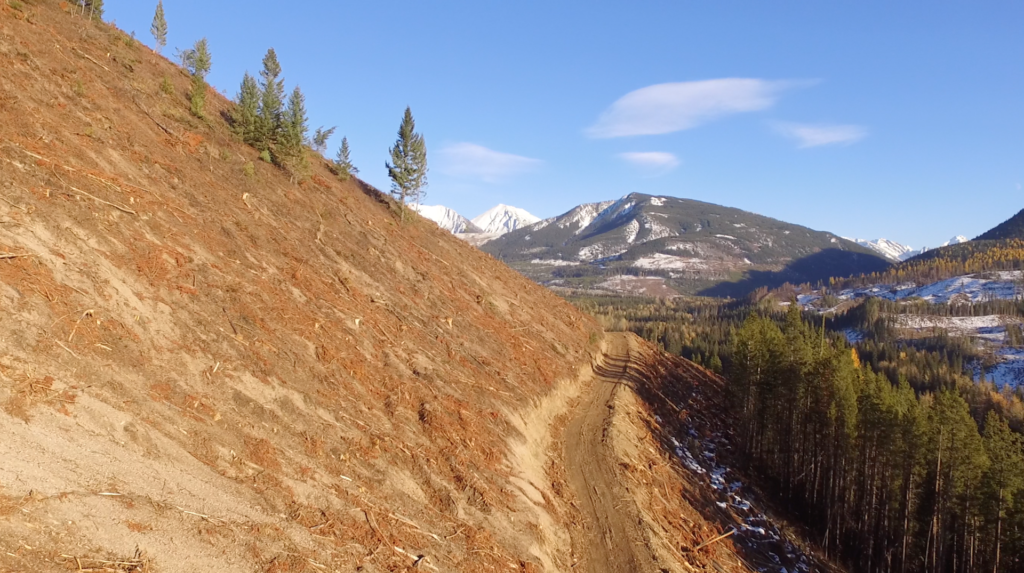
Eroded soils on steep slope harvesting on CanWel’s Private Managed Forest Land near the B.C.-Alberta border. Slope erosion can lead to increased sediment in streams. Sediment, which clogs gills and irritates mucous membranes, is dangerous to fish populations even in small amounts. Photo: Bailey Repp
“At a minimum,” the ELC report concludes, “privately owned forests should be held to the same practice standards as crown forestland under the Forest and Range Practices Act.”
The report also addresses an issue of major concern on Vancouver Island, where the largest expanses of private forests in B.C. are found. Under current rules, there is little to stop private forest land owners — including major corporations such as TimberWest and Island Timberlands — from clearing forests and then selling the logged lands for conversion into suburbs. And indeed, real estate has become a big part of their businesses.
The report concludes there should be strict limits on logging and flipping such lands and advocates for a return to the idea of a Forest Land Reserve, similar to the Agricultural Land Reserve, which was created to protect farmland in the province.
An ongoing concern with the logging of whitebark pine trees — both on privately owned and public lands — is that the species is generally considered to have very low commercial value.
Many of the endangered trees fall in what amounts to the logging industry equivalent of the fishing industry’s “bycatch” phenomenon, says Sally Aitken, a professor in the department of forest and conservation sciences at the University of British Columbia.
The industry doesn’t really want to log the trees, but they are in the way much like an undesired fish species may be in the way of the more prized catch.
Aitken notes that many years ago, foresters knew the most accessible valley-bottom forests were running out and that an increasing amount of logging would occur in the “guts and feathers,” or forests far higher up the mountainsides.
And that is precisely where whitebark pine trees are found.
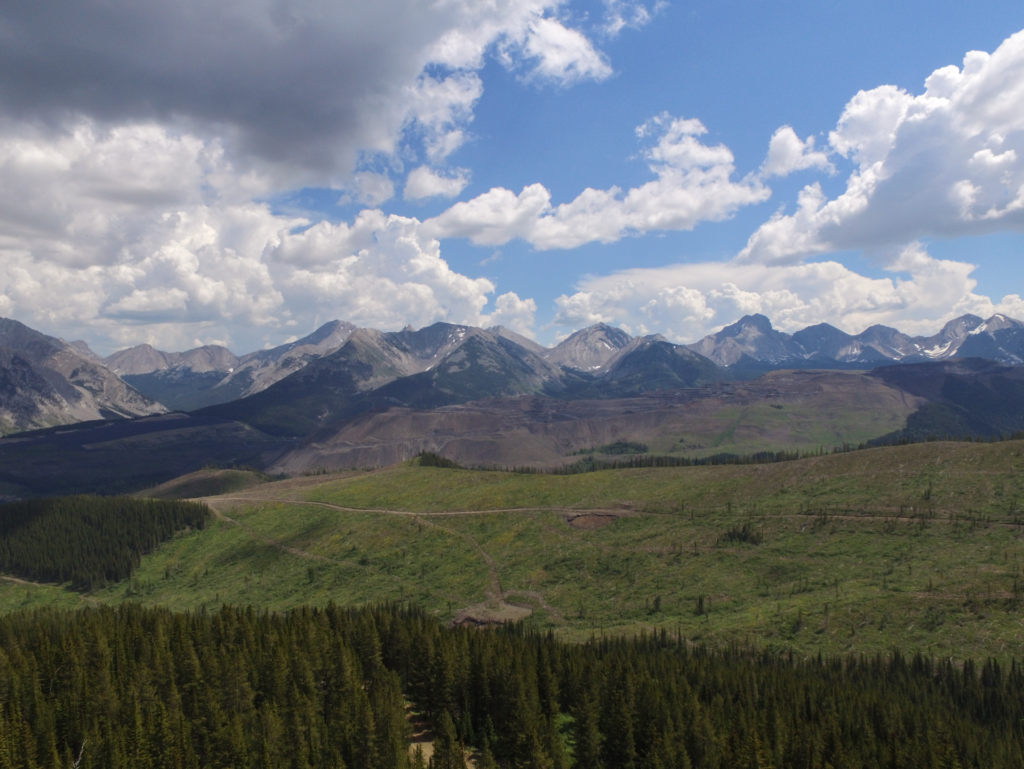
A winter harvested block on CanWel’s Private Managed Forest Land, with Teck Resources’ Coal Mountain mine in the background. In the Elk Valley, wildlife and ecosystems are dealing with the cumulative effects of logging, mining, development and recreation. Photo: Bailey Repp
As the logging companies go after the commercially desired spruce and subalpine fir trees, endangered whitebark pine trees fall too. Adding insult to injury, whitebark pine trees have very little economic value. If they are processed at all, they may become low-grade lumber or, more likely, they will simply be chipped to make wood pulp.
“It really is a waste,” Aitken says. “Nobody’s cutting it because they’re going to get something meaningful out of it.”
The Narwhal phoned Steve Williams, CanWel’s forest operations coordinator, to ask about the company’s logging of whitebark pine trees and was told to file questions by email, but the company provided no answers in response to the questions.
The major problem confronting whitebark pine is an exotic, introduced fungus that kills many but not all of the trees.
Provincial forests ministry officials have spearheaded efforts to plant whitebark pine seedlings grown from cones from trees that may have some natural resistance to the fungus. Dozens of plots have been planted and there is ongoing sampling of the plots to see how the trees are faring.
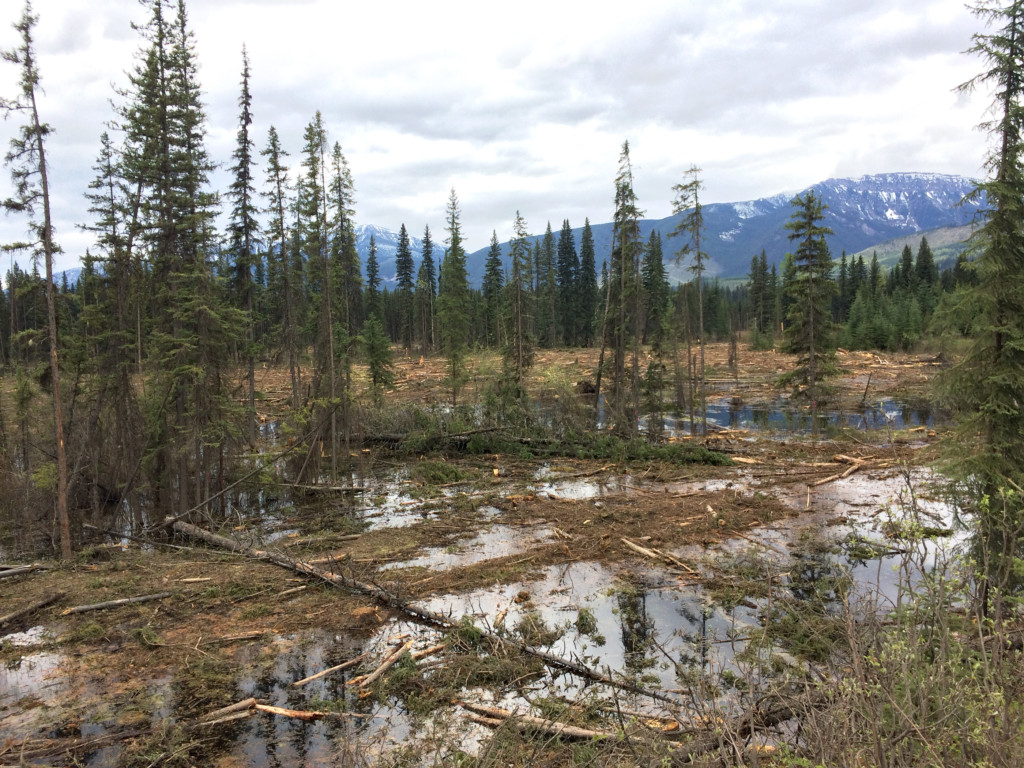
Logging by CanWel in a riparian area (the transition zone between land and water) near the town of Elkford. The majority of the Elk Valley’s riparian zones, which are rich in biodiversity, provide critical habitat to numerous species and are key travel corridors between low and high elevation terrain, are highly disturbed by industry and development. Photo: Bailey Repp
To date, roughly 60,000 whitebark pine seedlings have been planted in trials organized by the ministry, trials that are augmented by roughly 10,000 more planted by researchers at the University of B.C. and in the Smithers region.
But the planting trials are just that. Only time will tell whether some of the seedlings planted in those trials will not succumb to the fungus once again and live to replace the thousands of whitebark pine trees that continue to fall to the chainsaw in British Columbia.
This article was produced in partnership with the Small Change Fund.
Get the inside scoop on The Narwhal’s environment and climate reporting by signing up for our free newsletter. A $335 million funding commitment to fund...
Continue reading
First Nations are leading efforts to make sure lake sturgeon can find a home in...

We’re excited to share that an investigation by The Narwhal is a finalist for the...

A new documentary, Nechako: It Will Be a Big River Again, dives into how two...
